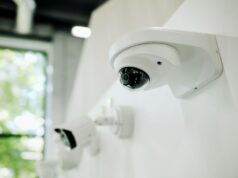The world of hospital security is fast-changing, moving beyond simple locked doors and alarm systems to encompass a robust network of physical, digital, and procedural safeguards. As hospitals evolve into technology-enabled facilities, they face the challenge of protecting patient data, ensuring the safety of staff and visitors, and maintaining the security of the institution’s infrastructure. The growing complexity of threats—from cyber-attacks to unauthorized access and even natural disasters—requires hospital facilities management professionals to adopt a comprehensive approach to security. With advancements like 5G-enabled technology, artificial intelligence, and Zero Trust cybersecurity protocols, hospitals now have a toolkit that combines traditional security measures with cutting-edge innovations. Yet, achieving this level of security isn’t just about implementing new tools; it’s about creating a vigilant, security-minded culture that puts patient safety and privacy first.
5G-Enabled Technologies: Redefining Security Connectivity
At the heart of hospital security advancements lies 5G technology, a game-changer for facilities looking to build smarter, more secure hospitals. Unlike earlier networks, 5G provides the speed and capacity to support real-time data exchange across a hospital’s many devices, from surveillance cameras and biometric access points to nurse call systems and patient monitoring devices. In 5G-enabled smart hospitals, security teams can coordinate responses swiftly, whether that’s monitoring who accesses sensitive areas or ensuring data integrity in the patient’s medical records.
This real-time connectivity also allows security protocols to expand beyond the physical walls of a hospital. Now, doctors, nurses, and administrators can be alerted to security breaches on mobile devices, whether they’re in the building or working remotely. This immediate connection improves response times and ensures that critical information reaches key personnel right when they need it. As impressive as these capabilities are, they demand vigilant security measures to prevent unauthorized access, making cybersecurity an equally crucial focus.
Fortifying Cybersecurity Protocols for Sensitive Data
With patient data increasingly digitized and accessible across various devices, the importance of robust cybersecurity protocols has never been greater. Cyber-attacks, including ransomware, have become alarmingly frequent in healthcare settings, prompting hospitals to invest heavily in secure networks. Cybersecurity specialists recommend adopting a Zero Trust model, a system that verifies every user and device attempting to access hospital networks. This model limits data access to only those with explicit permission, reducing the likelihood of insider threats and external breaches.
Protecting data isn’t only about using firewalls and encryption, however. Hospitals must implement layered security measures that include regular cybersecurity training for staff, security audits, and quick response plans in case of a breach. Educating staff on simple practices—like identifying phishing emails—can prevent costly errors. Comprehensive cybersecurity strategies also require continuous adaptation to address emerging threats, ensuring that hospital data remains secure in an increasingly digital world.
Artificial Intelligence (AI) and Machine Learning for Proactive Security
Artificial intelligence (AI) is transforming hospital security by adding a predictive, proactive layer to traditional measures. AI-powered systems can analyze vast amounts of data and detect unusual patterns, helping hospital facilities anticipate and respond to potential security threats before they escalate. For instance, an AI-based security system might notice an increase in attempted access to a restricted area or detect anomalous login behaviors on hospital networks, triggering an alert for the security team.
Machine learning enhances this further by allowing systems to “learn” from past security incidents and improve their accuracy over time. By analyzing historical data, machine learning algorithms can highlight vulnerabilities within hospital security setups, offering insight into areas that need reinforcement. Hospitals that incorporate AI and machine learning into their security operations are better equipped to manage complex risks and respond to potential threats before they impact patient care and safety.
Strengthening Physical Security: A Layered Approach
Despite the rapid advances in digital security, physical security remains foundational to a hospital’s overall security framework. Hospitals require a carefully layered approach to physical security, where surveillance systems, biometric access points, and traditional barriers like locks and security doors work in unison. With strategically placed cameras, hospitals can cover high-risk areas like pharmacies and data centers, deterring unauthorized access and maintaining a secure environment.
Biometric systems, such as fingerprint or facial recognition scanners, further tighten security by restricting access to essential personnel only. Moreover, the presence of security personnel trained in both emergency response and conflict de-escalation ensures that the hospital is prepared for a range of security scenarios. These measures, combined with advanced monitoring technologies, provide a robust physical security framework that protects patients, staff, and visitors.
The Role of Staff Training and Security Culture
Even the most sophisticated security system can be rendered ineffective if staff lack the necessary training to manage it. Comprehensive training programs that cover both physical and digital security practices are critical for hospital employees, from administrative staff to healthcare providers. By educating staff on everything from spotting phishing emails to understanding emergency lockdown procedures, hospitals reduce the risk of human error, a frequent cause of security incidents.
Beyond training, fostering a culture of security within the hospital environment is equally important. This culture can be reinforced through visual cues, such as posters and digital reminders, and by conducting regular refresher courses. Hospitals can also encourage employees to report any security concerns, promoting a sense of collective responsibility for security. When security is an integrated part of the hospital culture, employees are more likely to follow protocols and remain vigilant.
Regular Risk Assessments: Proactively Identifying Vulnerabilities
To keep security measures relevant and effective, hospital facilities must conduct regular risk assessments. These assessments examine both physical and digital security measures, identify vulnerabilities, and suggest updates to existing protocols. Hospitals that prioritize periodic assessments are better prepared to handle emerging threats, as they can address issues proactively rather than reactively.
A thorough risk assessment might reveal areas that require additional biometric access controls or uncover software vulnerabilities needing urgent attention. Additionally, risk assessments encourage hospital management to stay updated with industry standards, ensuring that their security infrastructure aligns with the latest best practices. For facilities management professionals, these assessments are a valuable tool in adapting to the ever-changing landscape of healthcare security.
Securing a modern hospital is no longer just about safeguarding physical spaces; it’s about establishing a seamless integration of physical, digital, and cultural security measures. From 5G-enabled smart technologies and AI-driven threat detection systems to foundational cybersecurity protocols and staff training, each element plays a crucial role in creating a safe environment for patients, staff, and visitors. Hospitals must invest in these security innovations not only to comply with regulatory requirements but also to protect the institution’s reputation and the trust of the communities they serve.
As the landscape of healthcare security continues to evolve, facilities management professionals have a unique opportunity to lead the way by implementing proactive, layered security strategies. The future of hospital security is about anticipating risks, training staff to respond effectively, and fostering a culture that prioritizes safety at every level. With a commitment to innovation and vigilance, hospitals can navigate the challenges of modern security and ensure that they are prepared for whatever comes next.
Sources
5G-enabled smart hospitals: Innovations in patient care and facility management
Crime Prevention through Environmental Design in Healthcare Facility
Enhancing Cybersecurity Protocols in Modern Healthcare Systems: Strategies and Best Practices
Healthcare innovations: Enhancing patient privacy and security in the digital era
IoT Security Risk Management Model for Secured Practice in Healthcare Environment
Risk management focusing on the best practices of data security systems for healthcare






